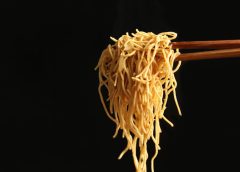Noodles are a staple cuisine in most homes. Everyone seems to enjoy them, whether we’re talking about classic spaghetti and meatballs or a hot bowl of ramen with beef and egg from the noodle shop up the street. However, have you ever wondered about their history? Noodles have a strong cultural significance that we can trace back to the Han Dynasty and beyond. Let’s briefly look at the history and culture of noodles below.
The Origins
As it turns out, modern noodle shops didn’t just start making noodles spontaneously. This stringy, delicious food has a wide and varied history from East Asia to the Mediterranean. However, it might be wise to dig into its origins. Some historians think that noodle dishes originated in the Middle East, where people would make them with semolina and dry them before cooking. Others believe they came from Central Asia during the Han Dynasty. It’s also highly possible that making noodles started in China and spread west. The most plausible explanation is that noodles found their origin in the Near East, including the countries of Turkey, western Asia, and Egypt.
An East Asian Artform
We would be remiss not to mention Asia in our examination of the history and culture of noodles. Noodles might have originated in East Asia, but the art form is flexible and adaptable. You can make it with virtually any ingredients, including rice, mung bean, kelp, yam, and corn. In China, most noodles are thick and round, like Udon, and some are skinny and straight, like the ever-popular ramen. You can steam, stir- or pan-fry, boil, or simmer them in soup. There’s a reason why master ramen makers still exist in modern-day Japan: their versatility requires mastery, and this mastery can take a lifetime.
The Culture
Noodles are a key part of both Chinese and Italian culture. So much so that they both boast their origins; they’re eaten during virtually every important event in Italy, and you can expect to eat them during the Lunar New Year and on birthdays in China. While it has humble origins, noodle-making is becoming a largely manufactured process, which is why many noodle shops use dough sheeters to create the perfect noodle. Overall, noodles have a long and illustrious history; we can’t wait to see what happens next!





